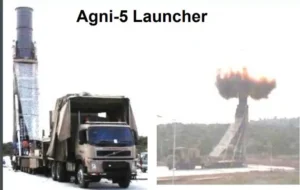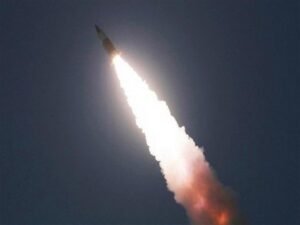India is focusing on enhancing its military capabilities, inspired by the Russia-Ukraine conflict. The country is procuring advanced artillery systems, rockets, robots, and surveillance technology to strengthen its readiness and defense. This includes the acquisition of towed artillery gun systems, mounted gun systems, self-propelled artillery, and missile capabilities. The Indian Army is also deploying a mix of artillery systems along the Line of Control.
India is enhancing its military capabilities by focusing on long-range firepower and precision-strike capabilities in a strategic move inspired by the ongoing Russia-Ukraine conflict. The Indian Armed force is set to obtain countless high level gunnery frameworks, rockets, robots, and observation innovation to support its availability and power survivability measures.
India’s proactive moves toward reinforce its tactical abilities mirror its obligation to guaranteeing public safety and readiness in an undeniably questionable international scene. The securing of cutting edge cannons, rockets, and observation innovation is a demonstration of the country’s purpose to protect its boundaries and keep up with vital prevention.
Under an ambitious capability development plan for the Army’s artillery regiments, the procurement of approximately 300 indigenous advanced towed artillery gun systems (ATAGS) and 300 mounted gun systems (MGS) has already commenced, with requests for proposals (RFPs) issued for these potent 155mm/52-caliber guns. This move is seen as a significant step towards enhancing India’s artillery capabilities, ensuring readiness in the face of evolving regional security challenges, said a top defence source in a TOI report.
Furthermore, the Indian Army is advancing its self-propelled artillery capabilities with the potential acquisition of an additional 100 K-9 Vajra self-propelled tracked guns. These artillery systems, known for their impressive strike range of 28-38 km, are the result of a joint venture between India’s L&T and South Korean Hanwha Defence. The deployment of K-9 Vajra regiments, equipped with ‘winterisation kits,’ along the eastern Ladakh border has already been initiated, showcasing the Army’s commitment to strengthening its border defenses.
In light of the ongoing military tensions along the Line of Control with Pakistan and the border dispute with China in eastern Ladakh, the Indian Army has strategically deployed a mix of artillery systems, including the new M-777 ultra-light howitzers, upgunned Dhanush, and Sharang guns, as was reported by TOI in another report. These deployments, coupled with the existing Bofors artillery, underscore the Army’s preparedness along the 3,488-km Line of Control.
A key takeaway from the Russia-Ukraine conflict has been the importance of force-survivability measures, particularly the ability to employ shoot-and-scoot techniques effectively. As a response to this lesson, the revised artillery modernization plan places a strong emphasis on acquiring more mounted and self-propelled guns, ensuring enhanced mobility and adaptability in the battlefield.The contract for the DRDO-developed ATAGS, with a remarkable maximum strike range of 48 km, is progressing swiftly and will be produced by Tata Advanced Systems and Bharat Forge. This artillery system is poised to play a pivotal role in India’s future artillery capabilities, with plans to eventually induct “more advanced versions” to meet the Army’s total requirement of 1,580 such guns.
In addition to artillery, the Indian Army is set to augment its missile capabilities with the induction of more regiments of the BrahMos supersonic cruise missiles. The extended strike range of these missiles, now at 450 km compared to the original 290 km, adds to the Army’s existing four regiments, enhancing its long-range precision-strike capabilities. Moreover, the Army is in the process of acquiring the new Pralay conventional ballistic missiles, with an initial order of 100 missiles finalized, covering a range of 150 to 500 km.
Recognizing the importance of a diversified arsenal, the Army is planning to gradually introduce at least six more regiments of the indigenous Pinaka multi-launch artillery rocket systems. These rockets, with an extended strike range of 75 km (and the potential for further extension to 120 to 300 km), provide versatile firepower and are already deployed along the Line of Actual Control (LAC).
Complementing these lethal weapons, the Indian Army is enhancing its surveillance and target acquisition capabilities by introducing a variety of drones and surveillance devices. These technologies will play a crucial role in accurately directing firepower against enemy targets. Additionally, the Army has initiated the delivery of precision-strike loitering munitions under emergency procurements, further strengthening its tactical capabilities.
The ongoing reorganization of Surveillance and Target Acquisition (SATA) artillery units will include the induction of tactical remotely-piloted aircraft, loiter weapon systems, swarm drones, latest weapon-locating radars, and battlefield surveillance radars. This integrated approach aims to establish an effective, seamless, and networked sensor-to-shooter linkage, enhancing India’s battlefield awareness and response capabilities.
Source link







